STARS & LIGHTS
TIARA Talent Solutions Awards finalists announced
DIRECTLY TO THE SOURCE
The pros of direct sourcing

TIARA Talent Solutions Awards finalists announced
The pros of direct sourcing

ESSENTIAL INSIGHTS FOR TODAY’S MARKET


From where I sit in TALiNT Towers, I have a very wide view of the talent ecosystem’s challenges and trends. For years now we’ve talked about the challenges that skills shortages have brought to employers from the Americas to the APAC region; and we’re definitely seeing the same trends across most of the first world –more jobs than people to fill them.
This is not the case in southern Africa, however.
I had the opportunity to visit my home country over the Easter holidays and it was a bit like being in Alice in Wonderland’s topsy turvy world. In South Africa, there is no shortage of labour, but rather vast shortages of jobs and skills. In our last issue of TALiNT International, we spoke to WilsonHCG’s MD, John Wilson, who’d said that their talent intelligence data pointed them in the direction of the sunny south because of productivity levels of workers there… Now having lived in South Africa for the vast majority of my life I can say without doubt that there is no shortage of people with a huge willingness to work – but a gargantuan shortage of jobs! And with almost 50% unemployment it’s a wonder how it will ever be sorted out.

The workforce has truly become a global one and talk of upskilling and reskilling continues to dominate the wider market. Perhaps it’s time employers the world over start thinking about widening their hiring nets and utilise talent intelligence to look over the fence – not only in your backyard – for people and skills – and for the opportunity to upskill. This new way of working and employers’ willingness to look more broadly to find skills and facilitate a global workforce really does open doors to a much wider talent pool.
I’m usually the cynical one in the team so maybe the African sun has baked my brain, but it’s certainly warmed my heart. The market that focussed on ge�ng bums in seats no longer exists, so, I must say that TA leaders are in a unique position to really change and advance people’s lives. And what a wonderful position to be in.
TALiNT Partners brings together a global network of leading employers and solution providers to make be�er talent and technology decisions by providing intelligence, insight and peer-to-peer networking that drives quality, innovation and improves inclusion across the talent ecosystem.

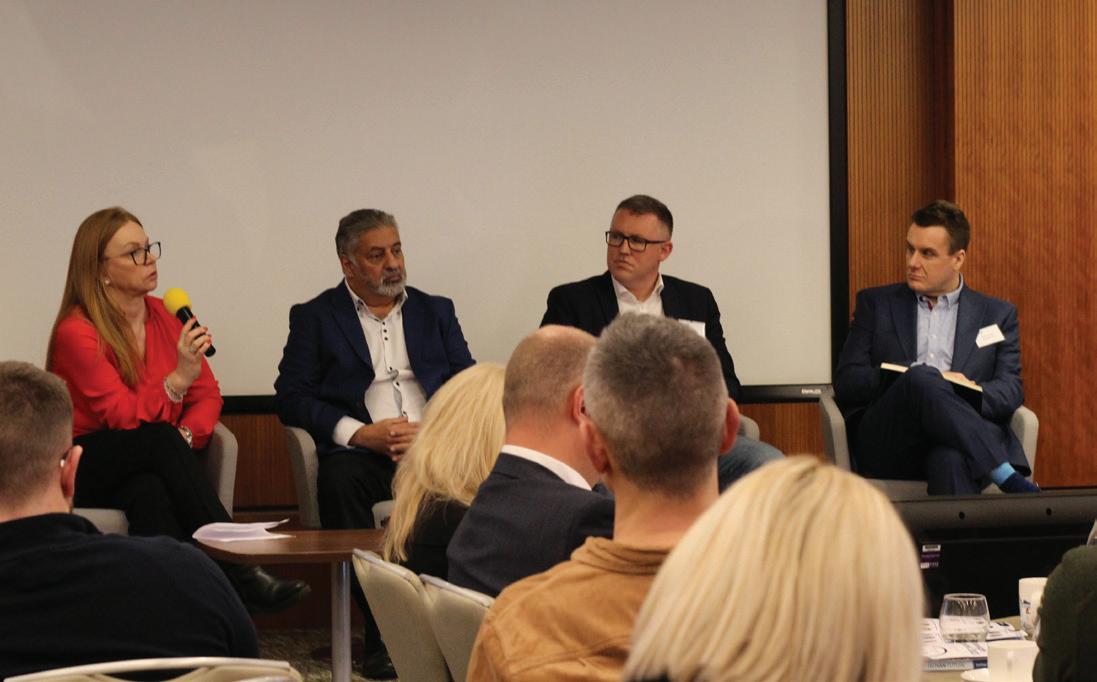









Our trusted platform manages all categories of non-employees.
With our hand-selected partner network, we deliver the services and capabilities businesses need today.
Be confident in the technology powering your workforce and gain expert guidance every step of the way with Beeline. Learn more at beeline.com.


TALiNT Partners definitely covered some ground this month having hosted industry leader dinners from Frankfurt to Minneapolis. Global challenges remain the same: the topics of skills shortages and a looming recession dominated conversation on both sides of the Pond but it wasn’t all doom and gloom as guests broke bread and made the most of the opportunity to network with peers.
20 April 20 April
BUILDING AND EXPANDING YOUR DIRECT SOURCING PROGRAM.
TALiNT Partners and AMS hosted a talent leaders’ dinner to discuss how to build and expand your Direct Sourcing Program. This was our first-time hosting in the Twin Cities, and the Minnesota hospitality was on full display throughout our visit. Conversation at dinner revealed that leveraging of the employer brand to build talent pools and cost savings are key drivers for using direct candidate sourcing.
WHAT SHOULD IRELAND’S RECRUITERS PRIORITISE FOR PROFITABLE GROWTH?
A�er several years of disruption in recruitment – with new expectations from clients, candidates and consultants – how are the best in sector adapting to find and keep the best talent? A full write up of the event will be published in the next issue of TALiNT International.

At this invitation-only event on the Emerald Isle, TALiNT Partners will bring together industry experts, solution providers and award-winning recruitment leaders to enjoy panel debates and roundtable discussions followed by a leaders’ lunch to connect with peers. There was also Guinness drank.



28 March
TALINT PARTNERS AND EIGHTFOLD.AI HOSTED A DINNER ON CREATIVE TALENT ACQUISITION TO TACKLE SKILL SCARCITY IN THE DACH REGION.


We were dining in the UK and dining in Europe. Yes, TALiNT Partners gets around!
This interactive was a roaring success, and our delegates were delighted to take part in discussions about Germany’s highest levels of employment in over thirty years; the unemployment rate remains low at 2.8%. This has profound implications for talent acquisition in a market with 764,000 notified vacancies in January 2023. We can’t wait to go back!
29 March
TALINT PARTNERS AND CORNERSTONE HOSTED A LIVELY AND INTERESTING DINNER IN THE VERY SUAVE PRIVATE DINING ROOM OF THE IVY IN LONDON.

We talked about the essential use of Talent Intelligence when it comes to strategy and workforce planning, the clash of cultures we’re seeing with yet another ‘way of working shi� with employers fuelling the return to in person working and of course, ChatGPT and whether it’s aiding or hindering workflows…
The shepherd’s pie was delicious. We always feel as if we’re cheating on the Beaumont’s shepherd’s pie, but both are equally decadent. (If you know, you know!)
The National Association for Business Economics has released the “April 2023 NABE Business Conditions Survey,” which suggests that economic growth may be easing, while employment growth remains slow. However, the survey also indicates that inflation is cooling, with 40% of respondents reporting that prices charged are rising, down from 46% in the January 2023 survey and 49% from a year ago.

The survey found that 15% of respondents said employment had been rising at their firms over the past three months, while 15% said it had been falling, resulting in a net rising index of zero. This is the lowest net rising index since the July 2020 and October 2020 surveys. For the next three months, 15% of respondents anticipate employment will rise, while 19% expect it to fall, resulting in a net rising index of negative four, an improvement from the negative seven net rising index in the January survey.

The survey also indicated that shortages of skilled labor decreased to 33% from 40% in January, while 11% reported shortages of unskilled labor. Close to half of the respondents reported that their firms are not facing any labor shortages, while 22% expect labor shortages to start to abate in the fourth quarter of 2023 or later.
In addition, for the third consecutive survey, 63% reported rising wages at their firms over the past three months. None expects wages to fall over the next three months, but only 43% of respondents expect their firms’ wages to rise in the next three months—the smallest share since the October 2020 survey.
The panel’s view is nearly evenly split on the probability of the US economy entering a recession in the next 12 months, with 44% indicating more than 50% probability, and 53% suggesting less than or about 50% probability of a recession in the next year.
The survey included 55 business economists and was conducted from April 4 to April 12
Shortages of skilled labor decreased by Shortages of unskilled labor decreased by
7% 11%
The increasing use of generative AI tools, hiring algorithms, and productivity tracking so�ware, among other AI applications, is transforming the employment landscape and creating new challenges for HR teams. Federal, state, and local regulators are struggling to keep pace with the rapid growth of AI, particularly in relation to its use in hiring decisions. The U.S. Equal Employment Opportunity Commission has expressed concerns about the potential for discrimination arising from the use of AI in recruitment. In response, New York City has enacted some of the most restrictive AI-inhiring laws in the country, requiring local employers to audit and notify job candidates about the use of automated employment decision tools.
According to a survey by Pew, many job seekers are wary of employers that use AI to assist with hiring decisions, with two-thirds of respondents saying they would not apply for such positions. The reasons cited included concerns about the need for specific keywords on applications and the inability of AI to capture nonverbal information from candidates. However, among the remaining respondents, some felt that AI could be less prejudiced and more objective than human recruiters.

Pew’s survey also found that respondent sentiment about AI varied based on factors such as income level, gender, race, and ethnicity. Higher-income respondents were more likely to favor the use of AI in reviewing applications, while men were more likely than women to see both benefits and downsides to AI usage in the workplace. White and Asian adults were also more likely to see potential downsides for AI used to monitor workers.
Employers must carefully consider whether and how to integrate AI into their processes. Some experts suggest that employers should allow employee needs to drive the use of AI and automation in the workplace. However, a survey of information technology managers and workers found that most respondents had witnessed negative impacts from employers using surveillance technology. As public opinion about AI in the workplace continues to evolve, many people remain unsure of their positions on the issue.
Most Americans oppose using AI to hire

As the talent agenda grows ever more complex, there are two types of organisations: those that already use Talent Intelligence (TI) and those who are going to start using it very soon…

HR professionals around the globe are faced with the unique challenge of sourcing the skills they need in a market where those skills are scarce; unemployment is low; online job ads outnumber the number of candidates to fill them and the threat of a recession makes decision making that much harder.
To make good decisions it’s important to have quality information, but o�en a frustrated line manager isn’t willing to budge on what they want in a candidate to fill a role, when talent acquisition leaders are telling them that their unicorn doesn’t exist. Alison E�ridge, (AE) CEO of Stratigens explains.

AE: “TI is used to make good decisions, but you need good data. Put simply, companies do research on their clients, consumers, competitors and markets all the time – but they don’t do research into their most critical asset – access to the skills and people they need to deliver this business strategy.
Talent intelligence delivers this data.
Or put it another way, if you don’t have any data, you are making a decision based on opinion alone and when is that ever a good thing?”
Toby Culshaw, Global Head of Talent Intelligence: Worldwide Amazon Stores said that TI is a relatively new offering and takes time to build its capabilities. “Currently TI sits in the Talent Acquisition function, but in the next 18 months or so we’ll see a shi� towards TI being incorporated across all organisation silos and will evolve into Workforce Science.”
There is a strong case for the use of TI. By leveraging data and insights to inform talent acquisition and wider management strategies, organisations can improve their ability to a�ract and retain top talent, drive employee performance, and ultimately achieve business goals. With the increasing importance of
data-driven decision-making in today’s business environment, TI has become a critical tool for organisations that want to stay ahead of the competition.

But ge�ng organisation buy-in isn’t always easy. Se�ng up a talent intelligence programme with a new client could have its challenges.
AE: “TI is a relatively new term and new market. The most common challenge is helping business leaders understand what TI is, why it is important, the impact it can have and the implications of not having it. That’s why much of what we do is focussed on education.
TI can be used tactically and strategically. In most organisations TI sits within a TA function and can get ‘stuck’ in tactical use alone. Whilst valuable, the wider business impact is lost. We spend significant time working with our TA community to educate them on the broader benefits and buy in.
As a new market there is a very small talent pool for TI people. And the pool that is there ranges from those with experience of data science and people analytics, to those with qualitative research skills and everything in between.
Over and above that, as a new market, there are many consultants who ‘jump on the band wagon’ as TI experts who add value but may miss the overall business benefit.”
Critical to TI is understanding the ‘so what’ –good data alone is not the answer, it must be overlaid with the insight and the ‘so what’ to add real value.
TI tells a story that isn’t always obvious. For example, if an organisation is looking to recruit web developers in Edinburgh but the TA teams can’t find any, TI is able to paint a picture as to why those roles can’t be filled and where to find the desired talent. Reasons for the seemingly lack of talent can range from low unemployment rates, incorrect or unreasonable salary expectations to commuter distance and age of those employed.
TI, when analysed and used to support hiring strategies, enables to TA teams to find out exactly where the right talent is geographically, match similar skills or job titles in order to find that talent in other industries or even that those skills don’t in fact, exist.
According to Alison there are more than 1,500 professional and social networking sites that feed Stratigens’ labour market data. It is critical for them to provide data from niche sites and regional sites to make sure they’re providing the most accurate picture of the talent supply and demand.
AE: “There are more than 32,000 different data points that feed our location and economics insights. Stratigens uses the very latest in machine learning to extract, categorise and label the data to avoid duplication, ensure accuracy and put it into a format that is easy to understand.”
An organisation will o�en say that they use LinkedIn Insights… But what is different?
AE: “LinkedIn Insights is a great tool and used by many TA professionals to tactically inform hiring. At Stratigens we believe the impact of TI goes way beyond this application. TI can shape and inform organisation design and workforce planning; in other words, where to grow and consolidate. TI can inform who to hire from and can tell you about diversity of the external
labour market at a role and location level to inform diversity goal se�ng and strategy.
Magic happens when you combine internal and external data – your people analytics teams and work with Stratigens on mapped external data feeds to combine the two and creates more holistic solutions for clients.
We believe that to make good workforce planning decisions you need good data and you need to join the dots between the labour market, location and the economy. We join those dots in a way no other tool does. That’s why we refer to ourselves as a decision intelligence so�ware app. So there is a big difference between LinkedIn Insights and a true talent intelligence application!”

There are more than 32,000 different data points that feed Stratigens’ location and economics insights.
How decision intelligence is applied to the different stages of the hiring process is the ‘so what’, the reason that TI will not only give you a competitive edge over your competitors, but a contextual one, too.
There are tactical and strategic ways to leverage TI across the hiring process:
Application
Tactical use: By using data on the size of the labour pool, the make up of that pool in terms of years’ experience and skills, the demand for that pool companies can start to ensure growth or consolidation in areas where access to talent is going to be less difficult.
Strategic use: But only by combining the above data with data around locations, infrastructure, economics, tax and costs can workforce planning become strategic.
Application
Tactical use: Recruiters can dynamically see what happens to the size of the pool as they add certain skill sets. This means they can sit with line managers and discuss the impact on hiring timelines, talent availability and salary.
Strategic use: Understanding the skills that reduce the size of a talent pool can be used to feed talent management and development programmes.

Application Tactical use: Using data on which companies in a location have the largest population of people, with the skills you need to hire, can lead to the build of competitor ‘ba�lecards’ for talent. Armed with fact sheet data on the competition, recruiters can use this during offer management to position your business in the best light.
Strategic use: Including data on locations, commute time, commute cost, cost-of-living and infrastructure (remote working spaces, broadband speed etc.) can feed into your working policy around hybrid, remote or office – a key part of decision making for all talent in today’s world.
Stage DE&I
Application Strategic use: Diversity of workforce is more important than ever today – we know diverse workforce produce be�er business results and more inclusive cultures.
Yet companies continue to set arbitrary targets for diversity. Stratigens shows the availability of diverse talent in the external market at a role and location level – so targets can be set at achieving at or above market availability.
Application Tactical use: Recruiters can dynamically see what happens to the size of the pool as they add certain skill sets. This means they can sit with line managers and discuss the impact on hiring timelines, talent availability and salary.
Strategic use: Understanding the skills that reduce the size of a talent pool can be used to feed talent management and development programmes.

Application Strategic use: Stratigens surfaces the source of profile data for every role in every location. This data shows the professional and social networking sites where we have identified profiles, and the top three. This data should be used by TA teams to determine where to focus media spend and sourcing time.
Stage DE&I
Application Tactical use: By seeing the top employers for roles in a location, a sourcing list is generated as key targets for a sourcing team to approach.
Stage DE&I
Application Strategic use: By understanding the average tenure and career moves for a role, companies can understand when they may have an a�rition risk in their business. This data can be used as a preventive measure and form part of a wider talent management strategy.
Top tips for getting C-suite buy-in according to Ken Brotherston, CEO at TALiNT Partners
1. Demonstrate the relationship between skills, location and diversity in supporting the business strategy.

2. Highlight the cost of ge�ng your talent strategy wrong/the benefits of ge�ng it right.
3. Show that TI isn’t just a great tactical response to a hiring challenge but sits at the heart of long-term workforce planning.
It’s important to note that it’s not just employers with skin in this particular game: staffing firms and talent solutions providers increasingly rely on talent intelligence and labour market analytics to determine their own approaches to how they can best help their clients, or indeed, even if they can help them at all.
Alex Evans, TALiNT Partners MD commented on the value TI adds to staffing firms. “Talent intelligence helps recruiters to add more value as strategic advisors by providing accurate labour market analytics to support their recommendations – and help clients build business cases for their solutions. It gives recruiters the insight to determine whether a project is worth taking on, or they have the capability to deliver, and to price talent solutions more confidently. It also gives recruiters the confidence to challenge their client’s workforce strategies and suggest new ones.”
It also gives recruiters the confidence to challenge their client’s workforce strategies and suggest new ones.

Changing client and candidate expectations are transforming recruitment, so where are the best new opportunities for growth for recruiters and what will give them a competitive edge?
On 9th March, TALiNT Partners brought together 100 senior executives from the sector’s biggest and best staffing and talent solution firms to hear insights and predictions from a panel of industry leaders, experts, advisors and a renowned global futurist.

The first panel looked at the models and solutions recruiters should prioritise in 2023 and kicked off with Annelise Smith, MD of Lorien, which has invested heavily in its analytics advisory service. “Employers need to understand the market faster and with less resource,” she explained. “Insight is core to our business in helping employers understand where the right candidates are, what’s stopping people applying to them, or barriers in their process.
Clients aren’t looking for static retrospective data or time to hire anymore. They want data to support more agile tactical and strategic decisions about their internal workforce, external labour trends, demand planning or pay rates.
As employer appetite increases for talent intelligence and a wider range of services, recruiters of all sizes are looking for funding solutions to build capability.
Sonovate has lent £2 billion to recruiters in the last eighteen months to help them develop and deliver new solutions like analytics - but which opportunities should they be investing in?
Mark Thompson, Group Head of Sales at Sonovate, highlighted some key findings from its recent Future World of Work report.
“With high inflation, low unemployment and rising wages, we’re seeing some key trends

converging to create new opportunities for recruiters,” he explained. “To a�ract and retain multi-generational workforces, including the over-fi�ies, employers and recruiters need to think about new models. More employees are looking at contracting opportunities as employers explore more flexible and outsourced options – so the future is a larger contingent workforce.”
Recruiters should be using talent intelligence to help employers build the business case for talent solutions and price their services more competitively. More accurate labour market analytics are also helping recruiters to identify niches they can grow into.
Talent Works is a market leader in content and employer brand services but has recently launched a contingent workforce solution for its mid-market niche. “Our RPO is for hiring sub-500, a space we have been successful in for some time,” explained CEO Neil Purcell. “The opportunity is for companies who may not have considered a different strategy, but they may have 10, 15 or even 20 suppliers pu�ng in
contractors on crazily different pay rates. The audit and compliance capability supporting our solution de-risks that, but we also have more actionable data and insights to make be�er workforce decisions.”

Umbrella providers like the Parasol Group are levelling the playing field for staffing and talent solutions firms challenging the larger incumbents, particularly those targeting SMEs and mid-market clients, with compliance, payroll and onboarding services at scale.
“The legacy of the pandemic is both employers and recruiters treating contractors more like permanent employees as competition for talent has intensified,” said Parasol Group Key Account Director, Kieler Berry. “Umbrella companies need to add value beyond payroll, developing technologies and solutions to embed themselves in the onboarding process and make it more streamlined for recruiters to re-deploy contractors more quickly. We have developed a benefits package for contractors focusing on their health and wellbeing, which we offer to agencies to differentiate their service.”
More employees are looking at contracting opportunities.
Analytics are also helping recruiters with their employer brand and EVP offerings, as Neil Purcell explained. “Actionable insight tends to be the first piece in the jigsaw of any EVP project, whether it’s validation on process, role segmentation or translating employer brand for new markets. This helps to determine recruitment marketing tactics and the best media pla�orms to use – but you need a talent intelligence pla�orm that pulls from multiple sources.”
TALiNT Partners recently announced its partnership with talent intelligence pla�orm Stratigens to offer this capability to its recruiter network to help them determine whether projects are worth taking on or price solutions like train and deploy more confidently.
“More of our customers, particularly the larger end of the scale, are talking to us about how they can leverage train and deploy, which we’re pursuing actively within Lorien and across the Impellam Group,” said Annelise Smith. “This is a huge opportunity, where we can accurately price and help clients build the business case with analytics.”
Recruiters of all sizes are looking at funding solutions to capitalise on new opportunities, not just in terms of service but in new territories like the US.

“We fund around 3,000 agencies lending about 150million a month, and our fastest growing agencies in the mid-market or enterprise have opened an international office, principally in the US,” said Sonovate’s Mark Thompson. “We all know the US market is massive. The margins don’t really seem to have compressed as much as the UK, and if you can find the right niche then the potential for accelerated growth is huge. We’re seeing agencies in the US growing around 70% faster than businesses that aren’t.”
Why are more recruiters looking to expand into the US? “The US generates four times the revenue that the UK does, with higher
recruitment margins, but it’s also one of the most complex markets in the world to operate in,” said Amy Davis, MD of PGC Group. “It has a multi-dimensional tax and legislative system and you need to have the mindset that you’re entering 50 countries. The most successful agencies have gone in with a niche strategy and built up from there.
The impact of the pandemic on the US is that clients hire differently and talent is moving around more. Some states have introduced tax incentives so big companies are migrating from California and New York to Texas, Florida or Georgia. Talent has followed for higher salaries and lower income tax, so employers need to offer flexible and remote options. Pre pandemic, one in ten workers in the US were contractors. Now it’s one in five. So, there is major opportunity in the contract space in the US.
NES Fircro� has seen huge success with its global strategy and won the TIARA International Growth Award for the third time in a row last year. How has its strategy evolved, and where does it see the best prospects for growth?
“Back in 2009, NES was predominantly an oil and gas recruiter, but we have evolved, in line with our clients, as they look to reduce the environmental impact of traditional energy assets, as well as develop renewable energy sources,” explains Keith Jones, Sales Director EMEA at NES Fircro�. “About 90% of our business historically was contract, but we have moved to a more balanced business including a sizable permanent and managed solutions offering over the last decade.”
As legislation evolves, new markets are opening up. 6CATSPro covers 75 countries across the world helping clients including NES Fircro� to expand compliantly. “The countries that are the most difficult to get into are o�en the best for growth,” said MD Jon Clarke. “In terms of legislation, every country has its own version of IR35 or employment regulation with varying degrees of severity, for example, it’s a criminal offence to misclassify a worker in Germany. So it’s not just about finding the right workers and skills but helping to protect clients and
contractors, especially in DACH and Benelux, which offer growth opportunities.”
We’re definitely seeing more flexibility on where and how people work, and contractors delivering services remotely in places like Belgium, for example, where it would have been unheard of three or four years ago. Now those same clients want hybrid for talent in different countries, which means having to think about right to work and dual tax treaties. Compliance is an important value add that recruiters can offer to manage these complexities.
Partnership is an important element in minimising risk and maximising reward, whether it’s funding, technology, compliance services, or talent intelligence.
The impact of the pandemic on the US is that clients hire differently and talent is moving around more.
A�er roundtable discussions to drill into themes from the first two panels, we kicked off the second half of the summit with an exploration of the new drivers of transformation in recruitment.
“If you look at the 20 biggest companies in the world at the beginning of the century, only one of them is still in the top 20; whereas in the recruitment industry, it’s 19 – so is it lacking in disruption or just really good at adapting to transformation?”, asked TALiNT Partners CEO Ken Brotherston. “Despite the ‘threats’ of job boards and LinkedIn, the industry has done very well to stay agile, but how will it adapt to AI and new client demands over the next decade?”
Mike McNally, Director Enterprise Solutions at Hays, predicted that recruiters will need to offer a much wider range of services – with RPOs already moving into BPO in response to demand.

“More providers are able to offer DEI, EVP, employer brand and train and deploy (T&D) services, with talent insight helping to
determine cost and benefit, and this is helping to change clients’ perception of recruitment as a more strategic service,” he observed, “but it all requires substantial investment, so you have to be confident in demand and be able to differentiate beyond price.”
ManpowerGroup has a wide range of offerings, but how does it manage the organisational complexity to join up teams and solutions? “We do it phenomenally well of course,” said Steph O’Connor, who heads up ManpowerGroup’s Centre of Recruitment Excellence (CORE). “As a global organisation, having a standardised pla�orm is very important to get the right data and insight. The World Economic Forum reported last November that there will be 150 million new jobs in digital by 2025, and over 50% of the existing workforce will need to re-skill to fulfil demand. Our pla�orm gives us the insight we need to develop solutions for these problems - not just in the UK, but globally.”
But are clients prepared to pay for BPO or a wider range of advisory services? “We’ve seen a 200% increase in demand for our train to fit programmes,” adds Steph, “but it’s less about
try before you buy and more a partnership with clients, candidates and other specialist training partners to be able to fulfil it.”
Rising demand for tech talent has driven more T&D solutions. NashTech, part of Nash Squared, provides outsourced tech development services, and its CEO Nick Lonsdale was asked how demand will evolve over the next few years. “What employers need now, and will continue to expect, is access to tech talent, certainty of outcomes and stable teams,” he explained. “They want a partner who understands their business and who can deliver success across different tech talent models. Long-term relationships with stable happy teams and candidates gives more certainty, and today no amount of money can buy time spent on re-building teams that have disintegrated.”


NashTech has made some strategic acquisitions to access tech talent to support its clients around the world. “Added to our 300 developers in India, we have 2,000 developers in Vietnam across three centres,” Nick added. “NashTech is the largest foreign-owned technology employer in that market; we’re not perceived as a
corporate, but we offer a great culture and real career development opportunities, leading to a lot of tech talent choosing us over sweating years in an uncertain start-up.”
What new drivers of transformati on are emerging, parti cularly with AI and automati on enabling new ways of working for recruiters and their clients?
“Our recruitment clients are asking us to help them sell a wider range of services to employers, but also deliver the experience their candidates want as well,” said Shaun Weise, VP Enterprise Internati onal at Bullhorn. “It’s addressing the basics to speed things up and keep people engaged. Like candidates being updated on applicati ons; being told why they didn’t get the job and highlighti ng other opportuniti es; prepopulati ng informati on to speed up compliance checks, assessment and onboarding. Automate the admin, enhance the human element and enable recruiters to differenti ate their service and approach.”
NashTech is the largest foreign-owned technology employer in that market.
“We will all have to be able to offer something unique to compete for clients and candidates,” predicted Mike McNally from Hays. “Whether it’s breadth of services or the ecosystem of partners that help you deliver them, we still need to demonstrate why we are the best at finding and placing the best talent.”
“Talent intelligence and partnerships that give us access to different locations, geographies and skill sets will become even more important because we can’t be specialists in all things on our own,” added Steph from Manpower. “Partnerships will help us add value by derisking for clients, with Statement of Work, or supporting with compliance services.”
So how are employer expectations changing and what does this mean for the future of recruitment?

Kathryn Herrington, CPO of SUSE, the global so�ware solutions provider, has worked with inhouse teams and RPOs in her career running global teams in tech and financial services.
“What I’m looking for is horizon scanning, not necessarily ten years ahead because the pace of change for all of us is just so rapid,” she explained. “What is the market doing in 6, 12, or 18 months? What does our business need to do to get ahead of those talent challenges? I want my internal and external recruiters to be thinking strategically with me about how we are resourcing in an added value way, for cultural fit.”
But what are employers prepared to pay for higher value services and how are recruiters helping CPOs and CHROs to build the business case?
“The shi� is linking it back to business outcomes and helping to demonstrate the ROI,” said Simon Wright, Global Head of Talent Advisory Consulting at Peoplescout. “Employer brand, EVP and DEI have moved from talent acquisition to the CHRO and the boardroom because the CEO needs to know how to get everyone in the organisation facing the same direction. It’s taking the conversation from tactical and demand led to strategic – and that requires talent intelligence. The CMO uses data and insight to present a business case, and recruiters can help CPOs to do that as well.

“We’ve got to be able to convert talent solutions language into the revenue conversation, like how IT supports transformation, so it’s not about how many candidates we generate but how it’s driving productivity and performance within the business.”
What part will recruitment tech play in the evolution of recruitment? “Candidates do want an element of self-service, and recruiters need
to provide the option, but as we learned from the banking sector and mobile apps it’s the customer service that differentiates,” said James Lawton, Enterprise Accounts at Mployee, which automates and integrates front, middle and back office for recruiters. “Ultimately, data quality and how it’s managed and optimised will be the new ba�leground to help candidates find the right recruiters - and the right roles find the right candidates.”
So what will tomorrow’s talent landscape look like and how can recruiters prepare for it?
“Employers have got to be more flexible about work pa�erns and work locations to a�ract and retain the right talent,” added Mployee’s James Lawton. “There are a lot of people over 50 who have stepped out of the market in this country who are brilliant but don’t want to work five days a week – and younger workers who want flexibility as well. Accurate data is key to finding and re-deploying the best candidates and contractors.”
The final piece of foresight came from our keynote speaker – renowned global futurist Rohit Talwar, CEO of Fast Future. Will AI pose an existential threat to recruiters?

“ChatGPT is only smart in the right hands,” he explained. “Recruiters need leaders who are able to use foresight and build teams with the right mindset. What we really need is people who have the capacity to think very flexibly. There’s a real opportunity to think differently about the talent we need and how we deploy it, whether it’s skills marketplaces, plural careers or pay as you go models. Just ask yourself, if you were designing a recruitment business for today’s market and what employers and candidates want, how would your model stack up?”
The future of recruitment is a more flexible, dispersed workforce and be�er use of talent intelligence to future-proof strategic decisions and build stronger business cases for new solutions. To successfully navigate rapid change and manage transformation, leaders need to know how to use insight and foresight to make be�er tactical and strategic decisions.
ChatGPT is only smart in the right hands.






On April 20th we hosted a Talent Leaders Dinner in Minneapolis. It was TALiNT Partners’ first time hosting in the Twin Cities, with our friends and partners from AMS, and the Minnesota hospitality was on full display throughout our visit.

As our dinner guests began to arrive, we discussed the future of work and how hiring practices had evolved, and would need to continue to evolve to keep up with talent demand. One of the topics that emerged was the growing importance of direct sourcing, whether for full-time hiring or for use in conjunction with, or in place of, third party source contingent labor.
I lead conversations with a question: “Who is currently using contingent labor in their workforce? All hands shot up in the air.
My next question was: “Who has a direct sourcing program in place today?” and, to my surprise, multiple hands went high in the air. However, direct sourcing for full-time hiring and not so much on the contingent side was what I was hearing… color me intrigued!
As the conversation continued to unfold, several of the Talent Acquisition leaders began to open up about their key drivers in utilizing some form of direct sourcing. Cost savings and leveraging of their employer brand to build talent pools were the drivers


heard repeated around the table. When one thinks of how best to acquire talent in today’s market, whether it is via a third-party agency or by recruiting your own, there can be cost savings to be had by creating a direct sourcing program.
Several of the dinner guests’ employers were within the healthcare space or had a significant healthcare component to their workforce. It’s a known fact that the healthcare industry is a difficult area to find talent in today and, when you do, you pay



handsomely for it. Even more so if a thirdparty agency is involved. To be able to cut that ‘spend’ on talent by as much as 3040% can be a very a�ractive and key driver for implementing direct sourcing.
Another key advantage of direct sourcing is the ability to leverage a company’s brand to build talent pools. By showcasing their brand and culture through targeted marketing campaigns, companies can a�ract top talent and build a pipeline of potential hires for current and future hiring needs.
TALiNT Partners is thrilled to announce the finalists of this year’s first in-person TIARA Talent Solutions Awards!
The TIARA Talent Solutions Awards honors MSP, RPO and Talent Solutions providers across North America that have made significant contributions to the field over the past 12 months. The awards recognize exceptional achievements across a range of categories, including The Client Service Award, The Omni Inclusive DE&I Award and The Cornerstone Best Use of Technology Award.
With more finalists than ever, this year is set to be TALiNT Partners’ biggest celebration yet.

In addition to the Awards ceremony, TALiNT Partners will host a Talent Solutions Conference on the same day. The conference will feature keynote speakers, roundtable discussions, and panel debates on the latest trends, challenges and opportunities across the sector.
It promises to be a day of invaluable knowledge sharing and insight to highlight and discuss key trends, challenges and opportunities across the sector – followed by an evening of glitz and glamor – in front of the shark tank!
The format will slightly differ this year! Panel discussions will run as normal, but following the panelists’ contributions, a rather ‘experimental’ session will follow! There will be advocates of two positions on a proposition to debate the merits of each position and then ask the audience to vote on a winner! We’ll look at serious topics but in (hopefully) a fun, lively and engaging way. Some of the topics include: Agile vs Enterprise; ESG: do candidates/ employers care; Automation vs Humanization.
There will be prizes!
Both the Awards ceremony and conference will take place on Thursday June 8 at the Georgia Aquarium in Atlanta. The aquarium is the largest in the United States, and it exhibits hundreds of species and thousands of animals across its seven major galleries.
“Yet again we are delighted at the quality of the entries for this year’s awards. They clearly demonstrate the dynamism, innovation and continuous improvement of an even wider range of Talent Solutions providers,” said Ken Brotherston, Chief Executive at TALiNT Partners.
This is a fantastic opportunity to engage executive leaders and decision makers from the widest range of RPO, MSP and Talent Solutions providers.
For further information on the conference and Awards please click here

“As innovators in the talent acquisition technology field, we understand the importance of recognizing excellence in the staffing and resourcing industry. The TIARA Awards play an essential role by showcasing ingenuity, achievement and continued success. As the talent acquisition field continues to grow and evolve, it’s important to spotlight the diverse and unique solutions available today, especially when it comes to increasing Diversity, Equity and Inclusion (DEI) initiatives.
As a company who believes in supporting innovative ideas and collaborating with others in the industry, TalentNet is thrilled to sponsor the 2023 Talent Solutions US TIARA Awards. We’re excited to see how major players in the market have grown and matured throughout the year.” TalentNet
at BeelineAs a company that is dedicated to transforming the way the extended workforce is managed and engaged, Beeline believes that recognizing and celebrating innovation and excellence in the talent solutions industry is vital. The TIARA Talent Solutions Awards provide a platform to honor those who are driving positive change and pushing the boundaries of what’s possible in the world of talent management. We are proud to be involved in these prestigious awards, as they align with our values and commitment to recognizing and promoting excellence in the talent solutions space.
– Brian Hoffmeyer, SVP Marketing Strategies





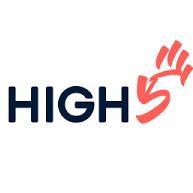























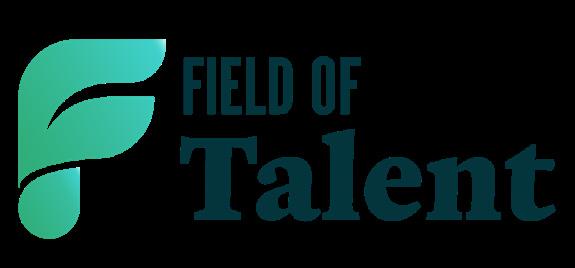

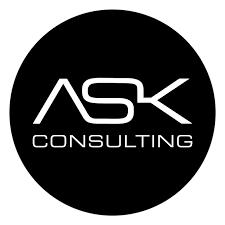









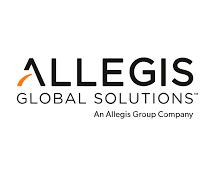

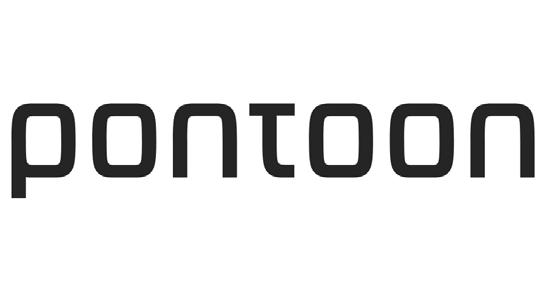








We’ll be hosting a day of invaluable knowledge sharing and insight to highlight and discuss key trends, challenges and opportunities across the sector.

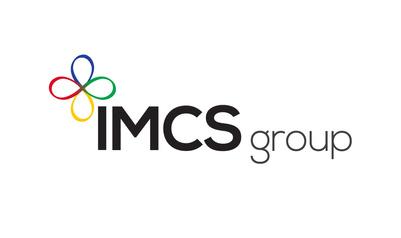


Followed by an evening celebrating the top Talent Solutions, RPO and MSP firms in the US at our gala dinner and Awards Ceremony.






Visit our website to purchase tickets and view the full day agenda.


THURSDAY JUNE 8
GEORGIA AQUARIUM, ATLANTA, GEORGIA


Back in 2003 I was Chairman of a recruitment company called Morgan McKinley. The MD and I gave an interview to Recruitment International (yes, the forerunner to TALiNT International). Here’s what we said about our approach to ways of working:
“We appreciate that to get the best from our people we have to be open to the ways in which they want to work and the environment in which they operate. This is why we encourage diversity and continual self-development.
Sabbaticals, flexible hours and remote working are actively encouraged. We don’t want to miss out on great people just because they would rather not work five days a week.”
And indeed since then, I have tried to keep up with the times regarding inclusion with varying degrees of success. At TALiNT Partners we had a distributed and flexible approach to work before the pandemic, our social interactions aren’t just based around alcohol consumption
and at the beginning of this year we introduced a Weekly Pulse survey which is a great way of checking in with the team on how they are feeling about things.
Pre�y forward thinking (if I say so myself), but my recent experience at Boston’s Logan Airport was a salutary lesson in how things evolve and that, personally, I still have things to learn.
I have to confess, my first reaction to seeing ‘doggie rest rooms’ was along the lines of ‘what
 Ken Brotherston
TALiNT Partners CEO
Ken Brotherston
TALiNT Partners CEO

on earth is the world coming to’ and ‘do we really need toilets for guide dogs?’ But as I walked towards my gate I saw a couple of young people with their service dogs. One young woman was struggling, and her service dog was clearly having a calming and positive effect.
And then it struck me: being airside you can still be affected by delays and having somewhere for dogs to do their business is actually pretty important. These facilities make absolutely no difference
This is why we encourage diversity and continual self-development.
to anyone else’s experience at the airport and were a great example of a practical response to help people who would ordinarily find it incredibly difficult to travel.
Contrast this with the recent furore over Budweiser’s campaign featuring Dylan Mulvaney. The comparison I would make is that engaging with underrepresented communities needs to be about so much more than a photo opportunity. The Budweiser campaign seems to say nothing more than ‘Hey, trans people can drink beer too’ which a) we all know already, and b) seems to trivialise the many real issues that group have in trying to live their day-to-day lives.
For employers, improving inclusion is not about high-profile campaigns, but rather in addressing the mundane but o�en complex issues of helping people find and keep a job they enjoy. Things such as flexible working, be�er understanding of childcare challenges, more awareness of the impact of menopause or the challenges of ge�ng older people back into work or the challenges of young people finding decent housing don’t really make for great headlines but, like our canine companions having access to facilities when they need them, it can make such a difference to your ability to retain the talent that you need.

It seems to trivialise the many real issues that group have in trying to live their day-to-day lives.


Connecting the talent ecosystem: we bring together a global network of leading employers and solution providers to make be�er talent and technology decisions.

